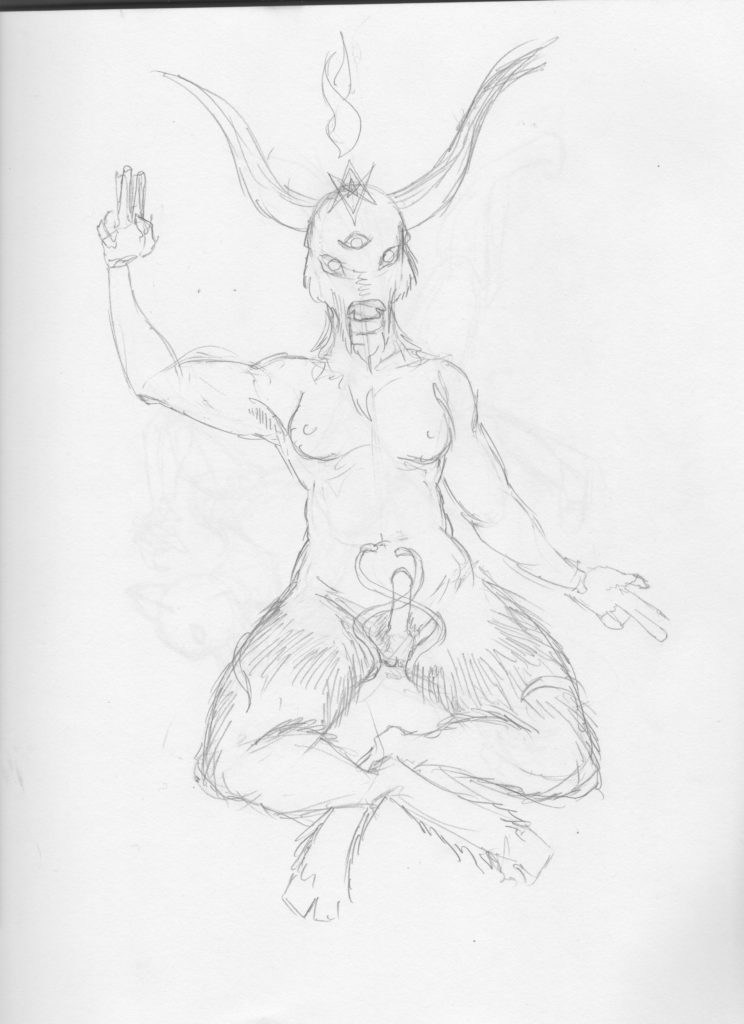I’ve mentioned a few times that my daily ritual includes an invocation of Baphomet, calling upon them to light their Gnostic fire with me, my familiars, and the world. I have mentioned that, on some days, I have been rewarded with visions of the god, and that I have attempted to reproduce those visions in art as a devotional practice. I have not been particularly successful at doing so *frequently*, but that practice has continued.
I may also have mentioned that the god has frequently appeared to me as a … triptych, for lack of a better word. Or I may not have. Frankly, I have struggled with the vision, in part because it is so different from the way Baphomet is depicted in any other source that I’ve seen. I have made a few attempts to render those images into art – as an act of devotion, yes, but also so that I can contemplate them, and try to understand them. These three pencil sketches from mid-May are the best that I have managed so far.
In the center, of course, is Baphomet as one usually sees them: goat-headed and goat-footed, in the magician’s pose, the sacred androgyne: both man and woman and neither; both divine and mortal and neither. Levi, who first drew this image, hid their phallus behind a magic wand. I suffer from no such cowardice. In this vision they are the Red God. No, I don’t know what that means.

On the right hand side (of my vision) is the White Lady, or perhaps White Priestess. She is crowned by the moon, and sometimes veiled or blindfolded. She tilts her head back toward the sky, and her arms hang down with her hand open, palms up.

On the left hand side is the Black Man, or the Man in Black, or both. His head is that of a deer, or perhaps the skull of a deer, with branching antlers. He holds his hands up in a gesture of power.

I don’t know what this means. I don’t know what any of this means. Didn’t I just write about how deeply uncomfortable I am with religious impulse and experience? And yet, mystic visions like these are what I live for. And if there are mystic waters unmixed with religion, well… I left those shallow shores behind years ago. When I wrote last, that thought made me angry. Today I am just … confused.
Of all the gods in my altar room, Baphomet is almost always the most present. Even as I have struggled with deep depression over the last weeks – a plain fact that deserves a post of its own – and I have struggled to feel the presences even of Dionysos and Aphrodite, gods who have been with me even longer, Baphomet has been there with me, reaching out, a palpable presence in the room.
The images above are still as much artistic flourish as mystic vision. I hope that, as I continue to struggle out of this emotional morass, I will be able to resume that work, the vision will return and I will be able to render it more clearly.



















